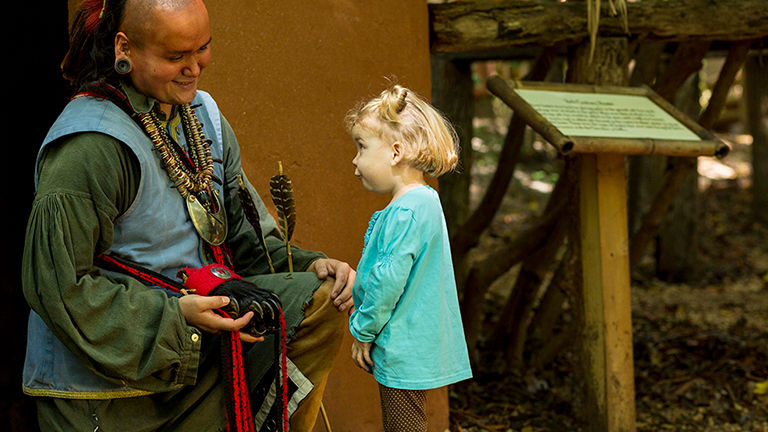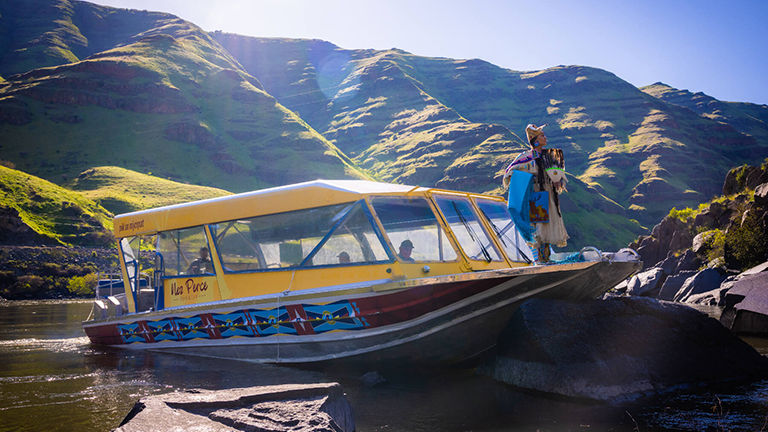Just in time for National Native American Heritage Month in November, the American Indian Alaska Native Tourism Association (AIANTA) is educating travelers on the cultural protocols to follow when visiting Native homelands around the United States.
AIANTA — an organization dedicated to advancing cultural heritage tourism in Native nations and communities across the country — notes that while every tribe and region of Native America is different, the newly released guidelines provide a good general baseline for those taking part in Indigenous tourism activities and opportunities.
To start, the organization reminds travelers to check any preconceived notions and expectations at the door — visitors should not expect, for example, to see Indigenous individuals living in traditional dwellings or dressed in cultural regalia, outside of celebrations or ceremonies. Visitors should, as a general rule, dress modestly, listen attentively to elders and refrain from touching artifacts. If asked respectfully, questions about culture and tradition are usually welcome.
Following are 15 additional informational points and visitor protocols from AIANTA that travel advisors and their clients should know before a Native American tourism experience.
1. Know the Correct Terminology
According to the AIANTA, both “American Indians” and “Native Americans” are generally acceptable terms to use, though individuals may have a preference for one or the other. American Indians refers specifically to Indigenous people of the lower 48 states, while Native Americans includes Alaska Natives, as well. Native Hawaiians, meanwhile, are considered a unique people.
2. Learn the Definition of “Indian Country”
“Indian Country” refers to the various self-governing Native American communities in the U.S., including reservations and land trusts. Federally recognized tribes (that have a government-to-government relationship with the U.S.) can make and enforce laws, determine membership and license, and regulate activities in their jurisdictions. Native Americans are also U.S. citizens with the right to vote.
3. Understand the Size and Scope of Indian Country
More than 56 million acres make up Indian Country (a combined area that roughly equals the size of Great Britain), spread across 326 American Indian lands.
4. Ask How a Person Wants to Be Addressed
As preferences vary, visitors should respectfully ask individuals what they want to be called.
5. Educate Yourself on Native Numbers
There are 574 federally recognized American Indian and Alaska Native tribes and villages. There are also more than 60 state-recognized tribes. According to the 2021 U.S. Census, there are 7.2 million Native Americans and Alaska Natives living in the U.S.
 Visitors can learn about Native culture at Oconaluftee Indian Village in North Carolina.
Visitors can learn about Native culture at Oconaluftee Indian Village in North Carolina.
Credit: 2023 Eastern Band of Cherokee6. Get a Lesson on Language
Although hundreds of languages were once spoken among the Indigenous peoples of North America, only about 200 of these languages remain today, and many live on only through a handful of speakers. English is currently the most common language, though numerous tribes are working to revitalize their traditional languages, as well.
7. Prepare for a Visit
Ahead of any visit to Native lands, travelers should research the community and be prepared to ask questions. It’s also a good idea to contact the tribe or nation to make sure they are welcoming visitors on the day in question.
8. Discover Where to Go
Many reservations are open to visitors and have sites and events to share with the public (NativeAmerica.travel is a good resource for finding such experiences). Other tribes prefer not to host tourists, and some require that visitors register at a tribal office. When in doubt, call ahead to the tribal government office.
9. Participate in Diverse Activities
Visitors can discover a multitude of Native cultures and traditions by interacting with the people known for adobe dwellings in the Southwest, buffalo herds in the Northern Plains, carved totems in Alaska and more. About one-third of Native American tribes have gambling operations, but there are many more authentic and historical experiences to be had during a visit.
10. Respect the Rules
Travelers are expected to adhere to a tribe’s laws, rules and regulations while on a reservation, and it’s a good idea to ask about them ahead of time. Visitors should also pay attention to local signage and respect the privacy of residents.
 There are a wide variety of activities offered by tribes such as the Nez Perce.
There are a wide variety of activities offered by tribes such as the Nez Perce.
Credit: Nez Perce Tourism and Visit Idaho11. Forego Off-Limits Areas and Events
Burial grounds, spiritual teachings and religious ceremonies are considered sacred, and are not shared with the public.
12. Refrain From Touching/Moving Objects and Artifacts
Artifacts and objects found on Native lands belong to that land and its people. It’s acceptable to ask a guide about an object of interest, but not to touch or remove it. Instead, visitors can support a tribe by investing in locally made arts and crafts (where available for purchase) to bring home.
13. Pay Attention to Authenticity
To avoid buying fraudulent art pieces or crafts, travelers should request a written guarantee or verification of authenticity for the piece; get a receipt that includes the price, maker and maker’s tribal affiliation; and recognize that authentic handmade pieces may be expensive. (More information about authentic Native works is available from the Indian Arts and Crafts Board.)
14. Ask Permission Before Taking Photographs
While on Native lands, visitors should ask permission before taking any photos or videos, especially of any individuals, events or activities. Some reservations do not allow it at all, and some others require a paid permit.
15. Keep Learning
The AIANTA-created NativeAmerica.travel website provides information on the unique experiences available to travelers in Indian Country, and also serves as a resource for planning a visit.